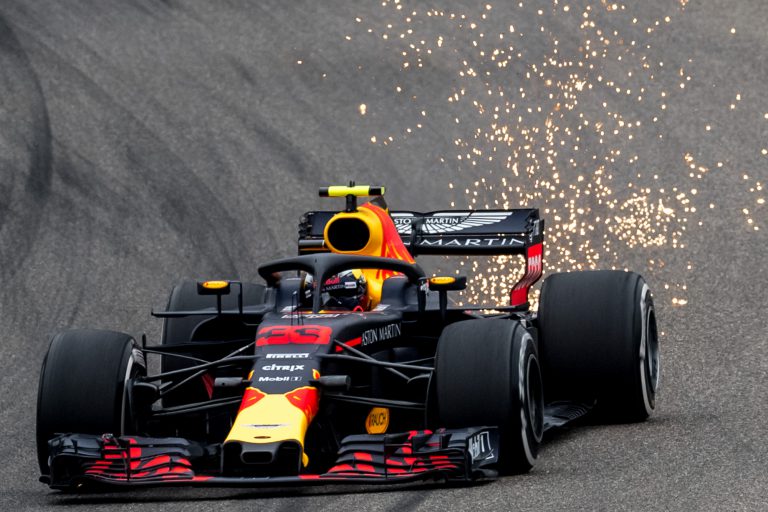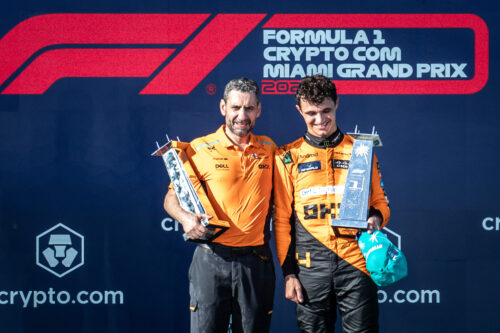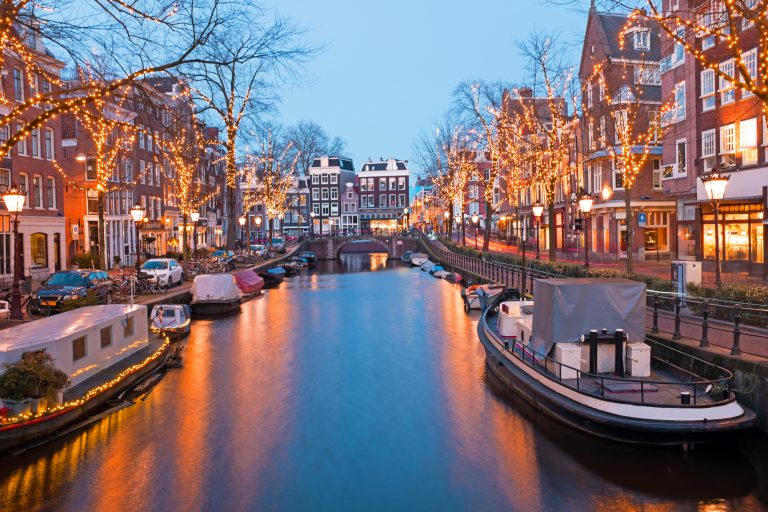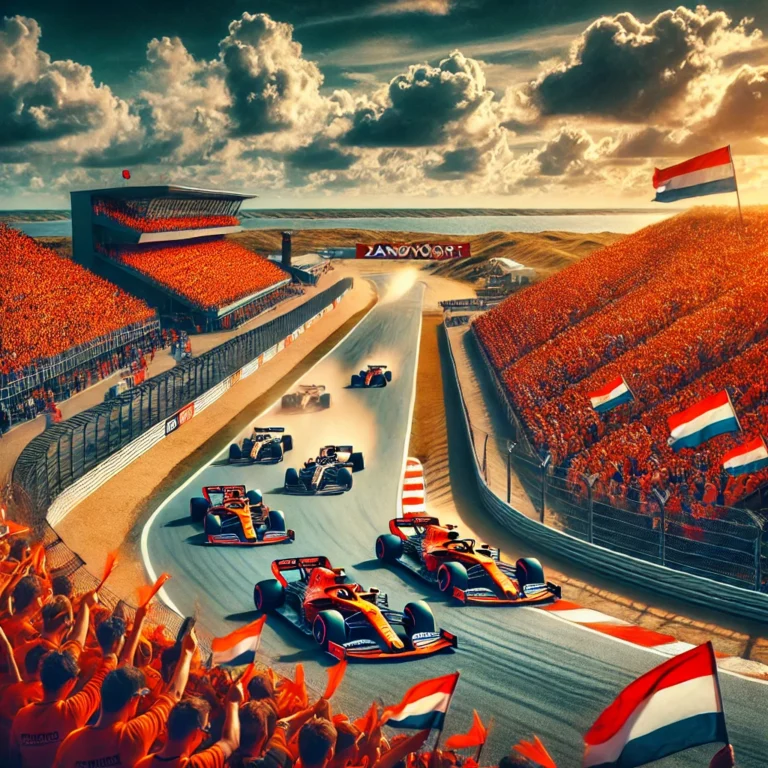History of the Dutch Grand Prix in Formula 1
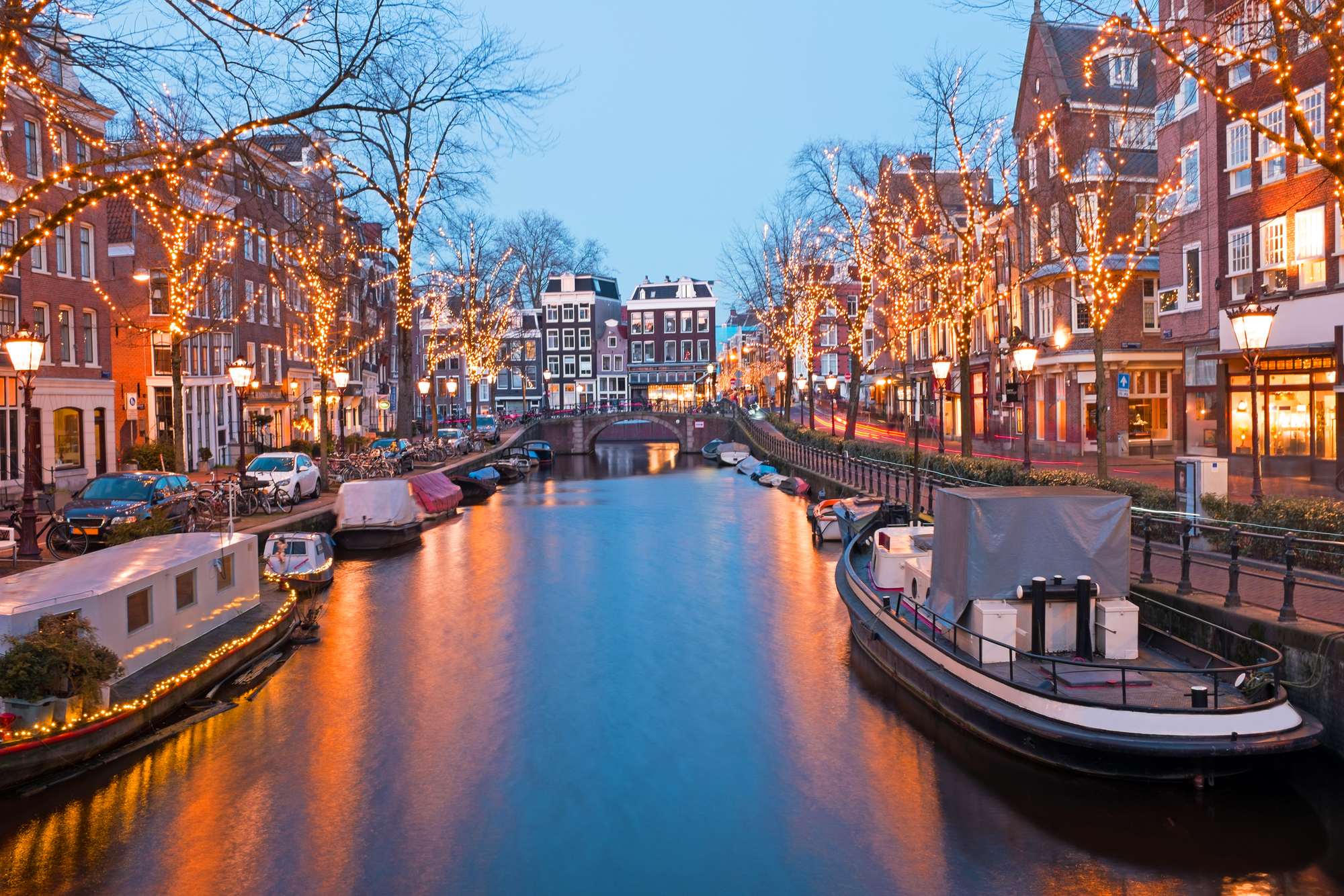
TABLE OF CONTENTS
The Dutch Grand Prix returned to Formula 1 schedule in 2021 after thirty years of looking in from the outside. The history of the Dutch GP dates back to the inception of the championship in the 1950s in Zandvoort where the race remains until today.
Zandvoort has undergone some major changes to its original layout providing fans and teams a circuit that is fast, challenging, and full of opportunities for overtaking to take place. With a little over thirty races having taken place in Zandvoort many great drivers and teams have won but only one team and driver can stand above the fray.
Let’s take a look at the history of the Dutch Grand Prix in Formula 1.
1950’S
The Dutch GP hosted two F1 non-championship races in 1950 and 1951 in Zandvoort where France’s Louis Rosier won both races driving for Talbot. Formula 1 was pleased with the track’s performance and added it to the F1 championship calendar in 1952.
ITALIAN PODIUM
In the Netherland’s first official Grand Prix Ferrari took the limelight and dominated the entire weekend with not one driver but three. Ferrari’s first F1 champion Alberto Ascari took pole position, the fastest lap, and who nearly led every lap and won the race.
He shared the podium with his teammates Giuseppe Farina in second and Luigi Villoresi in third turning the podium green white and red as Italy claimed the top three spots on the podium.
FERRARI WINS AGAIN
In 1953 Ferrari’s dominance continued with Ascari leading the team taking pole position leading into the race. Ascari once again had no issue winning the race, never giving up his lead to the entire GP. Farina added his second consecutive silver finish on the podium for La Scuderia.
The real war was between his Ferrari teammate Brit Mike Hawthorn and Maserati’s Felice Bonetto who shared his car with Jose Frolian Gonzalez from Argentina battling for third place. Ferrari was denied their second 1-2-3 finish in a row with Gonzalez finishing a few seconds ahead of Hawthorn. Italy on the one hand was still well represented on the podium with two of their teams and two of their drivers owning their respective podium spots.
FANGIO AND MERCEDES TAKE CONTROL
The Dutch Grand Prix held no race in 1954 and returned to the calendar in 1955 facing a very slippery track due to the drizzly weather on race day. Argentina’s Juan Manuel Fangio took pole position driving for Mercedes followed by his two teammates Stirling Moss of Britain in second and Germany’s Karl King in third.
Mercedes looked primed to replicate what Ferrari had accomplished in 1952 leading the race in the order they qualified until Kling lost control of his Mercedes on lap 21 sending him to the sidelines.
Italy’s Luigi Musso driving for Maserati fought hard to bridge the gap with the two Mercedes ahead of him but having a late spin in the final laps forced to be content with third.
BRITISH TEA PARTY
Once again Zandvoort was set aside in 1956 and 1957 and hosted the GP again in 1958. With history seemingly repeating itself with slightly different wrinkles it was Britain’s and Vanwall’s turn to own qualifications taking the entire front of the grid. The trio led by Stuart Lewis Evans who had pole position led the race from the start with his teammates in tow.
Tony Brooks who started in third had to bow out on Lap 13 due to a driveshaft issue and on Lap 46 Evans shared a similar fate exiting the race with engine problems. That left Vanwall’s Stirling Moss to take over and win his first Dutch GP beating out BRM’s Harry Schell from the United States and France’s Jean Behra in third.
SWEDISH DELIGHTS
In the last race of the fifties in 1959 history was made on multiple fronts creating a memorable race for Sweden and British Racing Motors. BRM entered the weekend without ever winning a single F1 race in nearly a decade but their Swedish driver JO Bonnier gave the team hope by taking pole position.
Bonnier had to fight off two Coopers, specifically Australia’s Jack Brabham who kept the Swedish driver honest the entire race. Bonnier became the first Swedish driver to win in Formula 1 and BRM finally broke their winless streak. Brabham finished second and his teammate Masten Gregory from the United States finished third.
1960’s
A DEADLY VIEWING EXPERIENCE
In 1960 the Dutch GP experienced its first tragedy when BRM’s Dan Gurney crashed and struck a fan watching dangerously close to the track. On the brighter side of the day, Jim Clark competed in his first F1 race only to exit on lap 42 due to his transmission failing. Stirling Moss, Clark’s teammate at Lotus, had pole position and was looking for his second win since 1958.
Unfortunately for Moss, he could not hold off Brabham and his Cooper who took over the lead. Moss continued to slide all the way to fourth place. Brabham won the race handily and was joined by Brit Innes Ireland in his Lotus in second place and BRM’s Graham Hill in third.
DÉJÀ VU IN THE NETHERLANDS
Déjà vu seemed to be occurring during qualifying as Ferrari repeated its quality qualifying run they experienced in 1951. In 1961 three Ferrari’s held the top three spots heading into the race.
Phil Hill, who had pole, lost his lead to his teammate Wolfgang Von Trips from Germany who eventually won the race. Ferrari was denied a 1-2-3 finish by young Jim Clark who clawed his way up from the eleventh place and battled Hill for second place. The two drivers put on a show exchanging positions until the Ferrari pulled away from Clarks Lotus. Clark’s third-place finish was his first in the Netherlands.
EUROPEAN HONORARIUM
In 1962 the Dutch GP had the honor of being called the European Grand Prix. During qualifying three British drivers took the top three spots qualifying with John Surtees and his Lola on pole, Graham Hill and his BRM in second, and Clark and Lotus in third.
On race day Graham Hill had the better day of the three as Clark could not keep up the pace and Surtees exited the race early on due to an accident on lap 8. Hill won the race easily followed by fellow countryman Trevor Taylor and his Lotus in second followed by Ferrari’s Phil Hill in third.
LOTUS AND JIM CLARK START TO ROLL
Lotus and Jim Clark’s relationship began to solidify, helping to create one of the more iconic duos in Formula 1 history. In 1963 the dynamic British duo scored a grand slam taking pole position, the fastest lap, led every lap, and victory. Clark shared the podium with Gurney in a Brabham in second and Surtees in third now driving for Ferrari.
Clark and Lotus continued their dominance despite starting the race in second position behind Dan Gurney. Gurney could hold back Clark who won the race by over fifty seconds over his closest competitor. Clark now tied Ascari for the most Dutch GP wins with two. Surtees and Ferrari scored second place and Lotus’ Peter Arundel from Britain finished in third.
MAKING HISTORY
Tying a record is an important moment for any athlete in any sport but breaking records is what it is all about. Clark, who had won two in a row, was looking for his third straight win from second place on the grid with Graham Hill ahead of him in 1965.
It took Clark six laps to take over the race and eventually surpass Ascari as the most successful driver at the Dutch GP. Britain’s Jackie Stewart joined his Scottish rival in second place driving for BRM and Gurney driving for Brabham finished in third.
THE MAN FROM DOWN UNDER
In 1966 it was Jack Brabham who brought an end to Clark’s winning streak at Zandvoort claiming his second win on the circuit. Brabham driving in his Brabham-Repco dominated, lapping all his competitors. Graham Hill driving in his BRM finished in second place one lap down and Jim Clark and his Lotus finished in third place two laps down.
CLARK’S CLIMB
Graham Hill joined Lotus creating a powerful duo of drivers with Clark as a teammate. Hill took pole in 1967 but was forced out of the race on lap 11 with engine problems. Clark, who qualified in eight, sliced through the drivers ahead of him winning the race with a comfortable twenty-second lead. Brabham who was no stranger to the Dutch podium finished in second alongside his teammate Denny Hulme in third, both driving for Brabham Repco. Clark’s win gave him four Dutch GP wins which remains the record to beat at the circuit.
SCOTLAND’S OTHER GREAT DRIVER
In 1968 another Scotsman began a streak of his own when Jackie Stewart and his Matra-Ford clawed their way up from fifth place to first winning his first GP in the Netherlands. France’s Jean-Pierre Beltoise finished in second place driving in a Matra and Mexico’s Pedro Rodriguez and his BRM in third place.
STEWART REPEATS
Stewart and his wild sideburns were not done winning in 1969 battling Austria’s Jochen Rindt for first place. Rindt was forced to retire on lap eleven with half-shaft issues allowing Stewart to power through to his second straight victory in Zandvoort. Swiss driver Jo Siffert finished in second place driving for Lotus and Ferrari’s Chris Amon from New Zealand finished in third.
1970’s
A BLAZING INFERNO
In 1970 Lotus introduced a radical new chassis to Formula 1 which eventually helped all the cars to evolve giving the driver a better view of the circuit ahead of him and reducing discomfort. Jochen Rindt benefited from the new design, taking pole position and eventually winning his first and only Dutch GP. Jackie Stewart, now driving for March, finished in second place with Ferrari’s Jacky Ickx from Belgium in third.
The race was not without tragedy as Britain’s Piers Courage had a horrific accident somersaulting his De Tomaso which caused his race car to explode. During the crash, Courage was struck in the head by one of his front tires killing him upon impact. When Courage’s flaming car came to a standstill the surrounding bushes and trees caught fire as well creating a hellish scene.
FERRARI REBOUNDS
With thoughts remaining in the minds of many drivers and Formula 1 officials the Dutch GP held its last race in 1971 without any safety barriers around the circuit. Rainfall was heavy which suited Ferrari’s Ickx who was exceptional in wet conditions, and took pole position.
Ickx went on to win his first and only Dutch GP with a comfortable eight-second lead over Rodriguez and his BRM in second. Ferrari for the first time in a long time had two drivers on the podium because of Swiss Clay Regazzoni finishing in third for the team.
A SCOTTISH REPRISAL
The 1972 Dutch GP was canceled due to the lack of protective barriers around the circuit and once the track conformed to F1’s more modern standard forcing the race to return in 1973. In its return race, a familiar Scotsman had a glorious day at Zandvoort.
Not only did Jackie Stewart win his third Dutch GP he also became the driver with the most wins in Formula 1 history with 26. Stewart surpassed Jim Clark driving for Tyrell and was joined by his French teammate Francois Cevert in second place. Britain’s James Hunt finished in third place driving for March.
A PREVENTABLE DEATH
Despite the positive moments for Stewart the GP had to face another death during the race. The saddest part about this entire incident was that it could have been prevented had track marshals had the appropriate equipment and there was better communication at the circuit of what was taking place on the track. Roger Williamson and his March lost control of his car at a high velocity that sent them flying into the surrounding protective barriers causing the car to flip upside down.
The car caught fire with a. conscious Williamson unable to escape the burning car while marshals who didn’t have protective gear were forced back by the flames. David Purley who also drove for March pulled his race car over and did all he could to try and flip the car back over to free Williamson.
He received no help because track officials were completely unaware that the incident involved Williamson. It was a horrible way to die, especially knowing that a simple measure could have saved the man.
LAUDA HELPS FERRARI
One year after the horrific death of Williamson in 1974 it would be Ferrari taking control of Zandvoort. Austria’s Niki Lauda and his Ferrari took pole position followed by his teammate Regazzoni in second and McLaren’s Emerson Fittipaldi from Brazil came in third. The race finished in the same order it began allowing Ferrari to score their first 1-2 finish since 1953.
HUNTING FOR HORSES
In 1975 it looked like Ferrari would have a repeat performance from the previous only to have it thwarted by an underdog. Lauda took pole position once again followed by his teammate Regazzoni locking up the front of the grid. Britain’s James Hunt and his privateer team of Hesketh turned heads qualifying in third.
On race day heavy rain fell forcing drivers to use wet tires at the start of the race. Hunt made a bold decision to switch his wet tires for slicks before his rivals, believing the track would dry. Hunt’s bold move propelled him into first with Lauda hunting him for the entire race. Hunt won his first Dutch GP and Ferrari was left with Lauda in second and Regazzoni in third.
HUNT GETS A DOUBLE
The battle between Hunt and Lauda could not be repeated in 1976 because the Austrian missed races due to injury. Hunt, now driving for McLaren, still had to deal with a Ferrari in his mirrors driven by Regazzoni. Once again Hunt had to hold Ferrari back up until the finish line winning his second Dutch GP by .92seconds. Regazzoni his third straight podium finish in second place and Lotus returned to the podium in third place with American Mario Andretti.
LAUDA TAKES ADVANTAGE
Andretti and his Lotus were in prime position for victory taking pole position only to lose the lead to Hunt who had an incredible start to the race in 1977. Hunt and Andretti battled hard for numerous laps until Andretti and Hunt bumped into each other, knocking the Brit out of the race.
Andretti was forced out of the race a few laps later with engine problems opening the door for Lauda and Ferrari to win the race. Lauda won his second Dutch GP and was joined by France’s Jacque Laffite and Ligier in second and by South African Jody Scheckter in third driving for Wolf.
LOTUS TAKES BACK THE TOP SPOT
In 1978 Andretti could not be denied victory as he took his second straight pole position heading into Sunday’s race. Lotus scored a 1-2 finish with Andretti winning and his Swedish teammate Ronnie Peterson in second place. Niki Lauda, now driving for Brabham, returned to the podium in third place.
VILLENEUVES BUMPY RIDE
Closing out the decade Formula 1 fans would witness one of motorsport’s more iconic moments brought to you by Ferrari’s Gilles Villeneuve from Canada. Villeneuve who qualified in sixth took advantage of some chaos ahead of him as drivers knocked each other out of the race.
Villeneuve took over the lead of the race and led until Lap 47 when he spun out. On Lap 51 Villeneuve’s rear tire exploded and rather than retiring on the spot the Canadian continued his lap on two wheels sending sparks flying in his wake. Villeneuve made it to the pits but due to the damage sustained he was forced out of the race.
Australia’s Alan Jones won the race driving for Williams. Scheckter, who fell to last place, scrapped his way to the podium in second place for Ferrari, and Laffite and his Ligier came in third.
1980’s
A THORN IN JONES’ SIDE
The battle between Jones and Brazil’s Nelson Piquet was in full swing heading into the Dutch GP in 1980. Piquet who trailed Jones needed a strong race to keep his championship hopes alive. Jones, who qualified just ahead of Piquet in fourth, could not keep up the pace and eventually finished out of the points in eleventh.
Piquet on the other hand with his Brabham went on to win the race narrowing the gap to two points for the driver’s title. Renault and France’s Rene Arnoux finished in second followed by countrymen Lafitte in his Ligier in third.
THE PROFESSOR TEACHES A LESSON
In 1981 Renault now had a young Alain Prost at the helm who took pole position followed by his teammate Arnoux in second. Prost led from the start of the race and won his first Dutch GP. Piquet and Jones once again had to square off with the Brazilian overtaking the Aussie for second place leaving Jones in third.
FERRARI RETURNS TO GRACE
Renault started the 1982 race with another pole position in hand with Rene Arnoux claiming it for the team. Sadly, for Arnoux, he could only lead the race until he crashed in the first corner of the race. Ferrari and Didier Peroni took over the race lead and eventually took the chequered flag. It was Pironi’s last win in Formula 1 history. Piquet added his third straight podium in second place driving for Brabham and Finland’s Keke Rosberg and his Williams in third,
In 1983 Ferrari took advantage of the battle between Prost and Piquet who took each other out of the race battling for the lead. Ferrari scored a 1-2 finish with Rene Arnoux winning his last F1 race and France’s Patrick Tambay in second place. Britain’s John Watson finished in third driving for McLaren.
THE FRENCH REVOLUTION
For three consecutive races a French driver had won at Zandvoort and in 1984 France had their fourth. Alain Prost won his second Dutch GP driving with McLaren controlling the race from pole position. He was joined by his veteran teammate Niki Lauda in second and Britain’s Nigel Mansel and his Lotus in third.
LAUDA BY A NOSE
Zandvoort’s last race in Formula 1 in 1985 before returning in 2021 had the McLaren’s once again dominating the weekend. This time it would be Lauda winning the GP which was also his last win in Formula 1. His teammate Prost finished right behind Lauda, losing out by .232 seconds. Future McLaren driver and Prost rival Brazil’s Ayrton Senna finished in third place driving for Lotus.
2020’s
SAILING THE ORANGE SEA
In 2021 Zandvoort returned to Formula 1 with a totally new look and layout which not only pleased the drivers but also the fans watching. The crowd was a sea of orange as they cheered their favorite Dutch driver Max Verstappen and his Red Bull. Verstappen at this point was behind Lewis Hamilton and his Mercedes for the driver’s title.
Verstappen gave the home crowd plenty to cheer about not only taking pole but also becoming the first Dutch driver to win on home soil. Verstappen’s victory allowed him to retake the lead for the driver’s title as Hamilton finished in second place followed by his Finnish teammate Valtteri Bottas in third.


